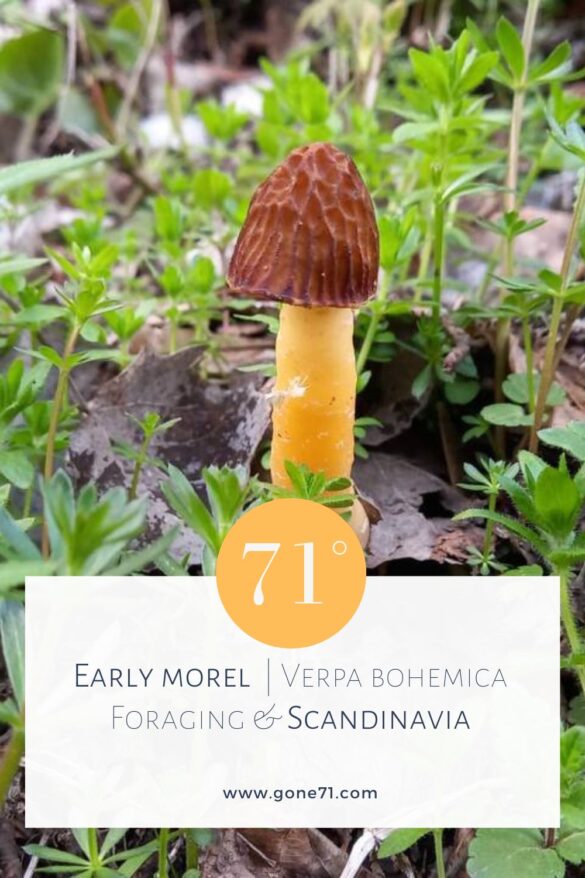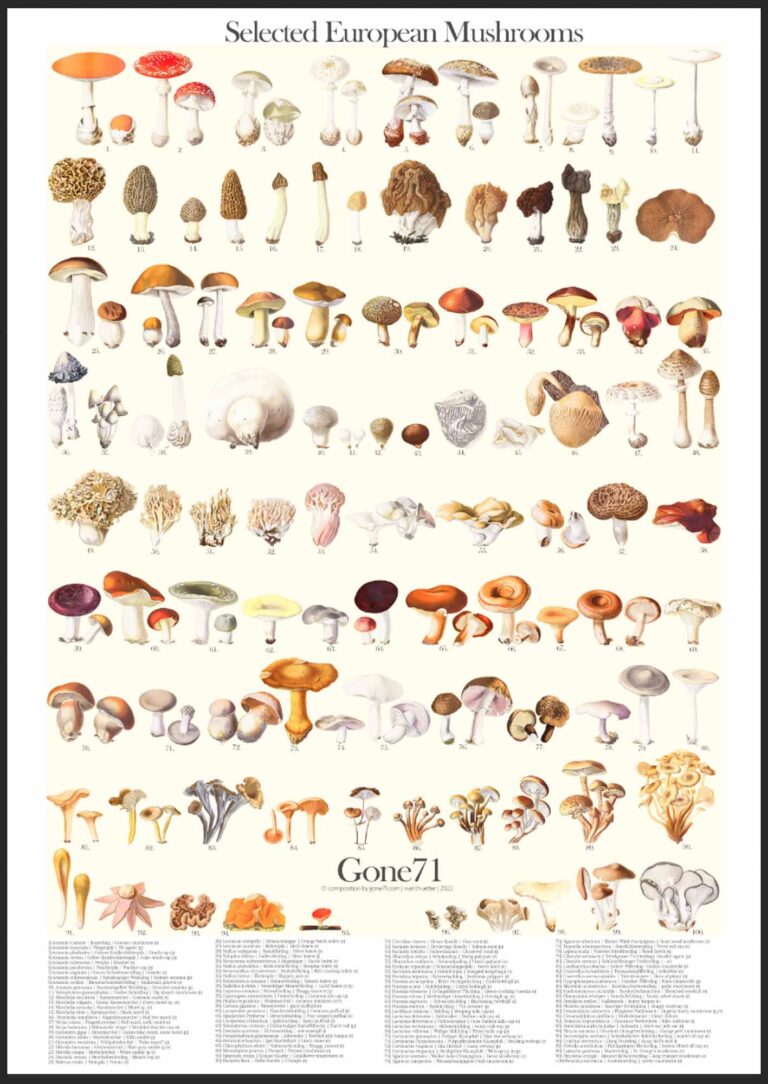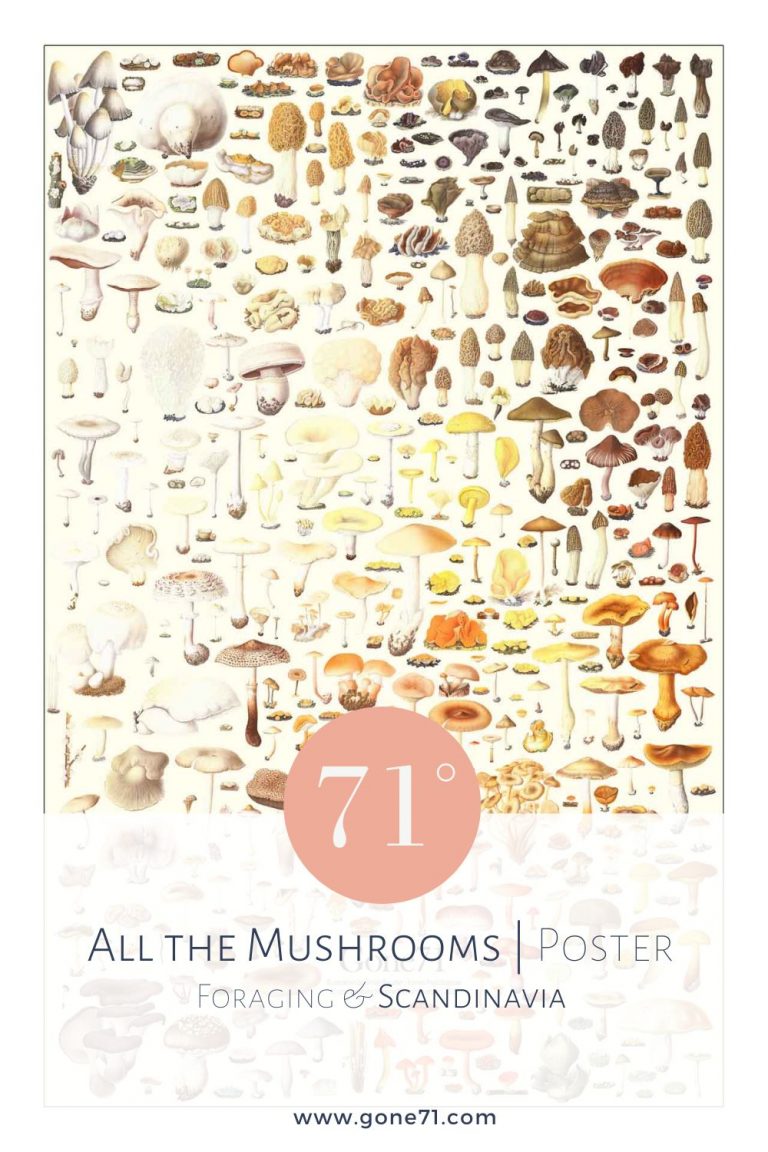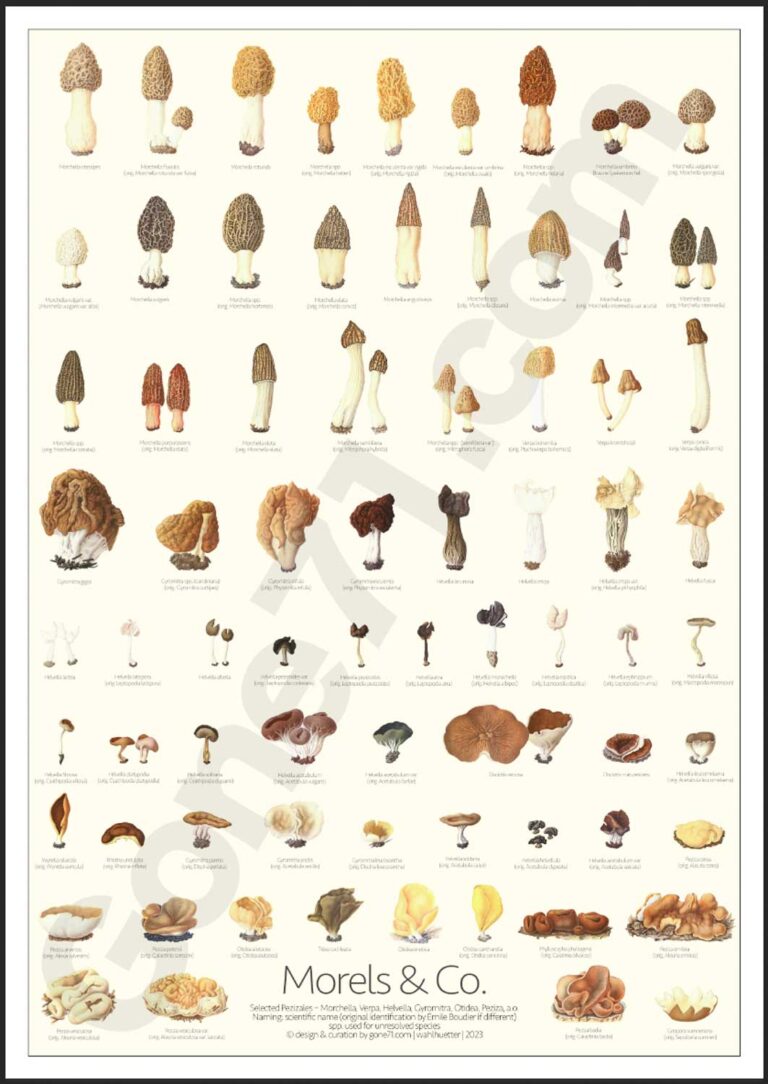nor.: Rynket klokkemorkel | swe.: Vindlad klockmurkla | fin.: Poimukellomörsky | dt.: Böhmische Verpel, Runzelverpel | sci. syn.: Ptychverpa bohemica
Verpa Bohemica, also known as the early morel or wrinkled thimble-cap, is among the earliest mushrooms to emerge (in Europe) during spring, symbolizing the arrival of the season and making it a sought-after target for mushroom foragers after the winter months of scarcity.
Like many mushrooms from the morel family, Verpa bohemica are also good edible mushrooms. Like all morels, however, they must be prepared properly as they are poisonous to humans when eaten raw.
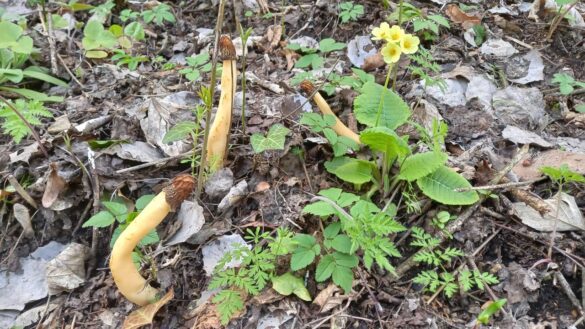
Appearance & habitat of Verpa bohemica (early morel)
cap diameter: 2-4 cm
height: up to 10cm
months: February – June (Central Europe)
colours: white to yellowish brown stem, brown cap
habitat: mixed forests, alluvial forest
odour: pleasantly mushroom-like
consumption: cooked
The odor of Verpa bohemica is usually described as pleasant, ranging from mushroom-like to slightly spermatic. However, if it emits a fishy smell, it is an indication of being too old or spoiled and should not be used.
The fruiting body of Verpa Bohemica typically has a diameter of 2-4 cm and a height of up to 15 cm. It is hollow on the inside, with a light to dark brown, wrinkled and labyrinth-like cap. The edge of the cap is usually whitish (lighter) and curved upwards. The flesh of this mushroom is thin, fragile, and wax-like, white in color but turning yellowish to yellow-brown towards the stem.
The stem of Verpa Bohemica is whitish to yellow-brown, thin-fleshed, and often marked with small white scales. The stem is hollow with chambers and attached flatly to the cap only at the tip. This is also one of the main distinguishing features to the Half-free morel (Morchella semilibera)
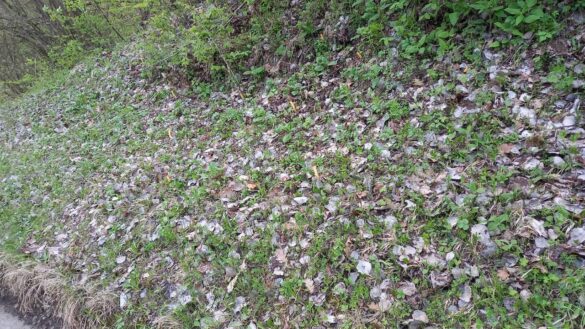
The spore powder of Verpa Bohemica is a vibrant ochre yellow color, resulting from large spores.
Verpa Bohemica is typically found in mixed forests, floodplain forests, and even in bark mulch. It is often found in association with black morels, often appearing as early as February, or as early as April in colder regions – hence its common name “early morel.” It has been reported to have a preference for growing in areas with calcareous soils, and it is known to form mycorrhizal associations with certain tree species, such as elm, ash, and poplar. Verpa Bohemica is known to be a cool-season mushroom, and its fruiting period can be influenced by temperature, humidity, and other environmental factors.
It is considered a saprophytic species, aiding in the decomposition of organic matter. Verpa Bohemica is relatively rare in some regions. Proper identification and caution are important when dealing with this mushroom, as it is known to be mildly toxic when consumed raw.
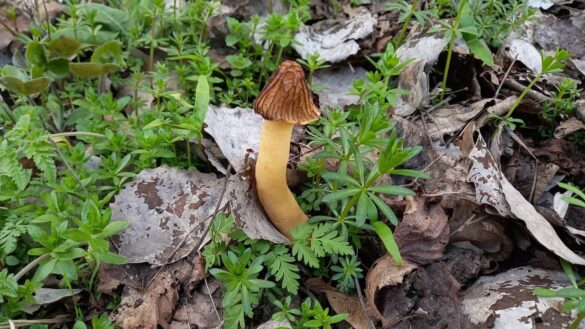
Look-Alikes of Verpa bohemica (Early morels)
Verpa Bohemica is often confused with other specis of Verpa as Verpa conica (bell morel) or other species of morels, especially the Half-free morels (Morchella semilibera), black morels (Morchella elata) or common morels. They are all edible if prepared properly.
Dangerous confusion partners are fungi from the Gyromitra family such as Gyromitra esculenta, also known as false morel or brain mushroom or Gyromitra gigas also know as giant false morel, snow morel or calf brain.
Both Verpa Bohemica and many species from the Gyromitra family share similar characteristics such as a wrinkled cap and a hollow stem. However, memebrs of the Gyromitra family contain the toxic compound gyromitrin, which can cause severe health issues and even death if ingested. There are some countries and cultures where false morels are (still) considered of high culinary value. However, this usually involves a very special preparation (heat treatment, drying, outside cooking etc…) and we advice against it since even the fumes of these mushrooms can be poisonous.
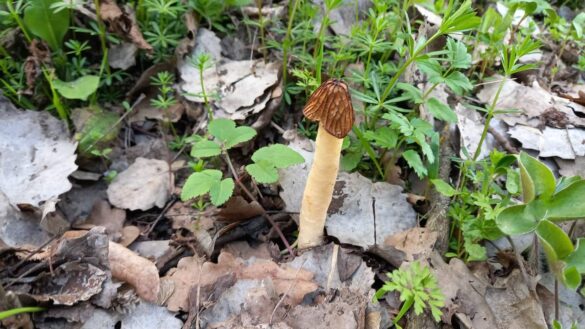
- Half-free morel (Morchella semilibera): The stem is hollow and partially fused with the cap, while the cap is usually pointed.
- Early morel (Verpa bohemica): The stem is chambered, cottony hollow, and only slightly attached to the cap at the top, while the cap is not pointed but rather rounded
- Bell-morel (Verpa conica): The stem is chambered and hollow, only slightly attached to the cap at the top, while the cap is not pointed but rather rounded, with minimal raised ridges. More smooth surface.
It’s important to pay close attention to key identifying features, such as cap color and texture, stem shape and size, and arrangement of the cap, to accurately identify this mushroom species and avoid confusion.
Caution: Mushrooms Are Not Guesswork!
Only harvest mushrooms that you can identify with 100% certainty! The consequences can be life threatening if you are wrong. If you have the slightest doubt: do not eat the mushroom! This is not a mushroom guide! For correct identification consult a mushroom expert.
Verpa bohemica (early morel) in the kitchen
The culinary value of Verpa bohemica, is a subject of interest among some mushroom enthusiasts. In certain regions, Verpa bohemica is considered a delicacy and is used in traditional cuisines after careful preparation methods such as parboiling and thorough cooking. The unique taste and texture of Verpa bohemica can be described as mild and delicate, with a waxy consistency.
Verpa bohemica (early morel) recipe
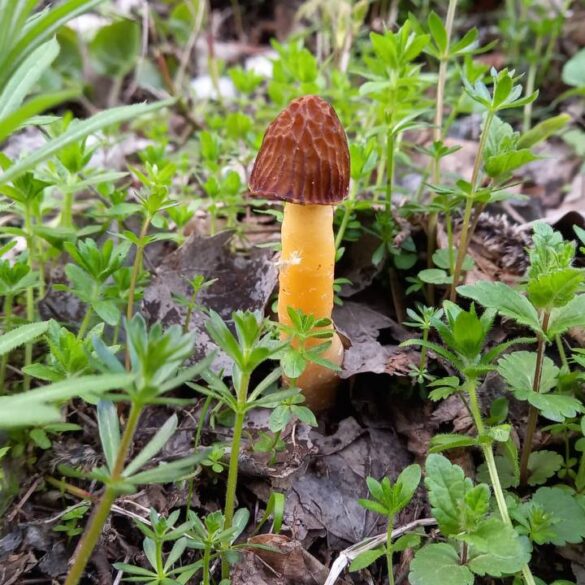
Sautéed Early Morel Mushrooms
Ingredients
- 1 cup early morel mushrooms (Verpa bohemica), cleaned and trimmed
- 2 tablespoons butter or olive oil
- 2 cloves garlic, minced (alternatively you can also use wild garlic)
- Salt and pepper to taste
- Fresh parsley, chopped (optional)
Instructions
- Heat a pan over medium-high heat and add the butter. Once the butter has melted and is foamy, add the minced garlic and sauté for 1 minute until fragrant.
- Add the cleaned and trimmed early morel mushrooms to the pan and stir to coat them in the butter. Cook for 5 minutes, stirring occasionally, until the mushrooms have softened and slightly browned. It is important that the mushrooms are well cooked - otherwise they can be poisonous.
- Season the mushrooms with salt and pepper to taste. Stir gently to distribute the seasoning evenly.
- Remove the pan from heat and transfer the sautéed morel mushrooms to a serving dish.
- Garnish with freshly chopped parsley, if desired, for a burst of freshness and color.
- Serve the sautéed early morel mushrooms as a side dish or incorporate them into your favorite recipes, such as omelettes, pasta dishes, or risottos.
Notes
Most of the time, the quantities of Verpa bohemica found are not extraordinarily abundant, so that the amount is usually not enough for a main course. We therefore usually use the mushrooms as a mixed mushroom together with other spring mushrooms such as common morels, black morels or bleach cups or simply as an ingredient in an omlette.
We have compiled this overview with the best of knowledge and belief, but do not claim to be complete and reserve the right to make errors.
Learn more about poisonous mushrooms and mushroom poisons here
↓↓↓
Find some inspiration in our illustrations
↓↓↓
Find some inspiration in other mushroom recipes
↓↓↓
